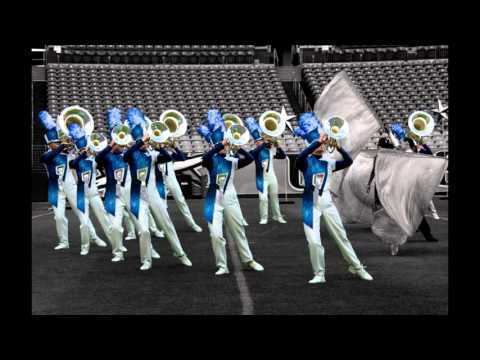Founded 1966 | Division World Class Championship titles 2000 (Division III) | |
 | ||
Uniform Grey Jacketw/Blue paneling on the left sideBlue under armor sleevesBlue sash on the rightw/No glovesGrey pantsBlue and grey shako wrap& blue tipped white plume Website www.seattlecascades.org Similar Les Stentors Drum and, Blue Devils C Drum and Bugl, River City Rhythm Drum and, Columbians Drum and Bugle Co, Racine Scouts Drum and Profiles | ||
The Seattle Cascades Drum and Bugle Corps is a World Class (formerly Division I) competitive junior drum and bugle corps. Based in Seattle, Washington, the Cascades is a member corps of Drum Corps International.
Contents

History

The all-male Greenwood Boys Club Drum and Bugle (D&B) Corps was founded in 1957 by Jack Avery in Seattle’s Greenlake area. In 1958, Roderick Stubbs became the director of the corps and changed the name to the Seattle Thunderbirds. With no other drum corps in their region, the corps existed as a parade and stand-still exhibition unit. The corps raised money to support its operations by holding bingo games at the Greenlake VFW, which became one of the corps’ sponsors. After witnessing the 1963 VFW Junior D&B National Championship (Nationals) in Seattle, the Thunderbirds' leadership decided to put the corps on the competition field.

1964 was a groundbreaking year for the Seattle Thunderbirds. Under the leadership of George Laumin and Jack Little, the corps entered the field with a program of show tunes and modern field drill. They were the first west coast corps to use contrabass bugles and multi-tenor drums. They traveled by train to Cleveland for VFW Nationals, where the corps placed 32nd among 45 corps. Additionally, the corps started a feeder corps and named it the Thunderbird Cadets, under the direction of Rod Stubbs and Jack Avery, with the major performance during its inaugural season being the Rose Festival Parade in Portland, Oregon.
In 1966, amid much dissension, Rod Stubbs left the Thunderbird organization, and with some of its marching members, started a new corps, named the Cascade Cadets. In 1970, many staff and marching members of the Seattle Thunderbirds defected to the Cascade Cadets, which then changed its name to the Seattle Cascades, After the 1972 season, the remnants of the Thunderbirds organization were absorbed into the Seattle Cascades. In 1977, for the first time, the Cascades traveled to DCI Finals in Denver, also attending American Legion Nationals in the Denver suburbs. Although they had some competitive success in its early days, some years the organization struggled to put a corps on the field. Some years the Cascades did not field and only marched in parades or went inactive.
In 1985, the corps reorganized as a Class A60 (later Division III [DIII]) corps. They then returned to marching parades until 1991, when they returned to the competition field in Class A60. In 1992, the corps moved into Division II (DII), moving up to a 6th place finish in the division in 1996 before taking another year off to reorganize. The corps returned as a DII corps, earning a 9th place finish in 1998 and 6th in 1999. In 2000, the corps stepped down to DIII and were crowned DCI Division III World Champions. In 2001, the corps membership nearly doubled, and the corps finished a close 2nd to Mandarins in DII, advanced to the Division I (DI) preliminary competition, and gained a 17th place ranking in DCI.
In 2002, the Seattle Cascades moved into DI (now World Class) competition and became the first corps from the Pacific Northwest to earn a place in the DCI Top Twelve Finals. Although they have failed to repeat this accomplishment, the corps has made three other semifinals appearances. As a consequence of the Great Recession of 2007-09, the corps took 2008 off from competition in order to stabilize their finances, but returned to the field in 2009.
Sponsorship
The Seattle Cascades Drum and Bugle Corps is sponsored by Northwest Youth Music Association, a 501 (c)(3) musical organization that has a Board of Directors, corps directors, and staff assigned to carry out the organization's mission. The Executive Director is Lewis Norfleet, Staff Coordinator is Nick Benson, and Tour Director is Michael Tran.
Show Summary (1972-2016)
Source:
Gold background indicates DCI Championship; pale blue background indicates DCI Class Finalist; pale green background indicates DCI semifinalist.
Corps Song
"Imagine" by John Lennon
Corps Symbol
The symbol of the Seattle Cascades is the Cascade Mountain Range.
